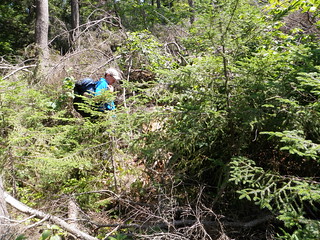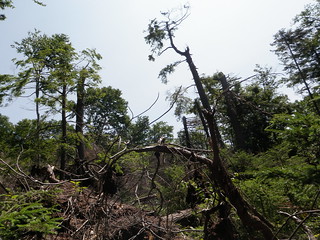Two examples of when I've gotten off schedule:
On a 7 day trip I had planned 15 mi/day, pulled a ligament in my knee on day 4 and had to slow down and stretch the last 3 days out into 4. Thankfully, that was one of the trips where I had built in an extra day, but the injury most likely wouldn't have happened if I had started out slower.
On another trip, I had planned a 16 mi day ending at Roan High Knob, but started out slow and made it only 9 miles to Clyde Smith shelter by 2 pm. Rain was coming and decided it would be unwise to try to push another 7 miles and over 2000' up to Roan High Knob. The next day I made it to Roan High Knob by lunchtime and went down to Carver's Gap, but there were 50+ mph winds and lightning so decided to backtrack to the shelter instead of trying to cross the balds in those conditions. In the end, I made up the miles by pushing 40 miles from Roan High Knob to Dennis Cove in 2 days - basically hiking from dawn to dusk. But it was exhausting, and in the end I realized my mistake was planning the 16 mi day with the big climb up Roan at the end.
So yes, injury and weather played a role, but so did planning longer days than I should have. If I had used the difficulty ratings, I would have seen that my first hike started out with 4 days straight of difficulty rating of 200 or greater (which is clearly too much for me starting out), or that the 16 mi day up Roan had a score of 283 (max for me is about 250 even with trail legs).
Odd Man Out, thanks for sharing this. I modified your spreadsheet a little bit (partially my fault, the AVG_GRADE should have been multiplied by 100 in the formula). The numbers from Map Man's data are very close to what I came up with on my own.
https://www.dropbox.com/s/ps3rkw316u...=e&n=449565794
Never heard of Naismith's rule before. The problem is it assumes a constant walking speed, and I don't walk at a constant speed. I always start out fast in the morning, then get slower and slower as the day wears on. On a good day, I can get 8 miles in before noon, then it usually takes me the rest of the day to hike another 8 miles.




 Reply With Quote
Reply With Quote






